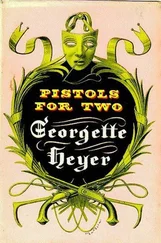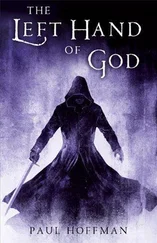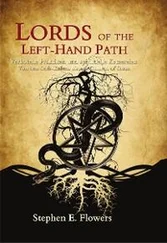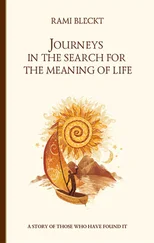They listened politely to my description, then a man stepped forward and, in more convincing English than his companion, explained that his friend was looking for the toilet. Embarrassed, I pointed the way.
Later that evening, when my shift was over, I walked home along the lake and saw them out on the pier, watching the sun set. I stood watching them watch until it was dark.
There are things I see and seek out and touch so frequently that they take on an iconic degree of familiarity, such as my wristwatch and keys and wallet. I look for these items so often that I begin to see them even where they are not: my keys appear in a pile of broken windshield glass in the gutter; a gleaming quarter spied between the slats of a picnic table takes the shape of my wristwatch; my wallet can be found in a woodpile.
I see my watch and keys and wallet wherever I go, even in places I am visiting for the first time. I see them whether or not I am actually looking for them, even if I have them on my person. The part of my mind in charge of searching for them has searched so often that it has become a separate and independent entity, always alert and at work.
This part of my mind would love for my wallet, watch and keys to be everywhere at once — for duplicates of each to be spread across every surface and wedged into every crack and crevice — so that I could take note of them and be reassured at all times. But there is another part of my mind, the dominant part, that recoils at such a thought.
Because this latter part is dominant, I am sane. But should the former part gain the upper hand, I would become mad, believing that those familiar objects were always everywhere around me.
A friend told me about a traumatic memory he has of his childhood. In the house where he grew up, and where his father still lives, there is a hole in the floor in the corner of the living room, drilled there to allow passage to the cellar of a steam pipe which was removed when the house was converted to electric heat. This hole allows a narrow view of the cellar below. My friend recalls hearing, at about age five, his father at work downstairs with a power saw. He peered down through the hole just in time to see his father slip on some poorly stacked boards and inadvertently slice off two fingers with the saw, the index and middle of the left hand. He remembers his father’s howl of pain and the spatter of blood on his workbench, and the subsequent arrival of an ambulance.
I have met my friend’s father, and he is indeed missing those fingers. He has a habit, when speaking, of rubbing the stumps on his forehead.
When, in middle age, this friend shared his recollection with his father, the older man told him that he had lost the fingers in an industrial accident at the factory where he worked, and backed up this version of events with a yellowed clipping from the company newsletter, which described the incident and commented on his recovery and return to work. The father also pointed out that his workbench was not below the hole in the living-room floor and never had been, and that had such a thing happened he would not have called for an ambulance, but bound the wound and driven himself to the hospital. Furthermore, there could have been no poorly stacked boards in or around his work area, as he was unfailingly tidy and cautious with his tools. He suggested to my friend that maybe he was remembering the ambulance that brought his mother to the hospital, where she died of heart failure at an early age, and conflating it with the slaughter of some rabbits, which he, the father, had raised in cages in the cellar during the lean times of my friend’s childhood.
My friend eventually came to believe his father’s explanation, but he says that the memory of the severed fingers remains clear in his mind, and is all the more disturbing to him now that it appears to be false.
I got up once in the middle of the night and went out to the street in my robe, where I saw giant yellow machines, bought by the city for the purpose of clearing wet leaves from the gutters, slowly trawling the curbs with their red lights flashing. Their engines made a throbbing noise, and if I closed my eyes I could imagine that they were tanks, occupying our town at the close of a long, hopeless war.
As they passed me I peered into the cabs and was surprised to discover no one was driving them.
On a break at my office the next day, I called the department of public works and asked if there had been street cleaners at work during the night, and I was told there had been. But when I asked if the machines had possibly been operating without drivers, I was promptly cut off.
The only other unusual thing was that it was early December, and bitter cold outside, and I recall being quite comfortable without a coat, and the sidewalk warm beneath my bare feet. Otherwise, the dream was entirely plausible, and I am still not certain it didn’t happen as I remember it.
Our dinner guest, a self-taught expert on so-called “lucid dreaming,” which refers to those dreams so sensually detailed that they are indistinguishable from reality, and which, at least in our friend’s case, can be created and controlled at the whim of the dreamer, arrived with an ashen face and his right arm in a cast. During the meal, we asked him what had happened, and he told us, his eyes tired and voice heavy, that he had quit the dream-experimentation for which he had become so well known.
When we pressed on with our inquiries, our guest recounted his story. He had dreamt that he was in line at the post office, waiting to mail an elephant-shaped package wrapped in brown paper. As he waited, a circus clown came dancing in
the door, followed by a monkey wearing a fez and carrying a concertina. The clown distributed balloons to all the postal clerks, and then the monkey played the concertina while the clown sung an unintelligible song.
Lucid dreamers, our guest interrupted himself to tell us, have a standard “reality test,” which they use to assure themselves that they are dreaming: the dreamer passes his hand through a solid surface, and this impossibility confirms the dream-state. When he reached the counter, our guest administered his reality test, plunging his own hand into the hard countertop. The impact broke two of his fingers. As it happened, he had not been dreaming; in fact, he was mailing a stuffed toy elephant to his niece, and it so happened that one of the postal clerks had that very day turned forty, and the others had hired the clown and monkey to perform a birthday song in German, a language, they explained to our pain-racked friend, often used by the clerk for comic effect.
The incident had convinced our guest to give up his beloved pastime. However, his lucid dreaming has persisted. Only the control he once exerted over the dreams has been lost. Consequently, he has no means to escape what have become terrifyingly realistic nightmares, and his sleep has been profoundly unrestful.
When another guest asked him why he wasn’t certain that the entire experience of his disenchantment with lucid dreaming was not itself a dream, a wild look came into his eyes, and he thrust his bandaged hand into the dining table. The remainder of the evening was spent in the emergency room.
The brief hysteria that overcame our town last year began when an elderly churchgoer, emerging from a morning mass, noticed that the colorful knitted scarf draped around the neck of a passing homeless man seemed to bear, in its variegated threads, the image of the Virgin Mary, and that, furthermore, the Virgin’s two crudely stitched eyes appeared to be secreting tears. The homeless man was quickly surrounded by amazed parishioners, and interrogated about the origin of the scarf.
Читать дальше










